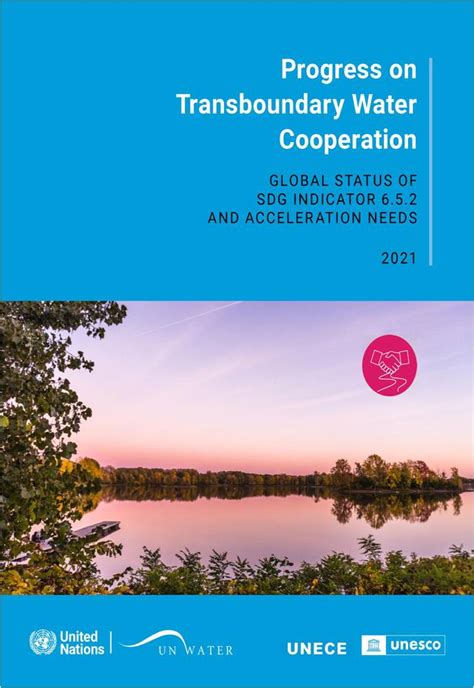Insurance coverage disputes are a frequent and complex area of legal contention, often involving intricate interpretations of policy terms and conditions. This article explores some of the most significant case studies in this field, shedding light on the nuances of insurance disputes through landmark cases. By examining these cases, we uncover key legal principles and trends that have shaped the landscape of insurance coverage litigation. From understanding common disputes and legal principles to analyzing court decisions and their impacts, this article provides valuable insights and practical lessons for both policyholders and insurers, offering a comprehensive overview of the evolving nature of insurance coverage disputes.
alijyun.com will take you through an extensive exploration of this topic.
1. Overview of Common Insurance Coverage Disputes
Insurance coverage disputes often arise when policyholders and insurers disagree over the scope and applicability of coverage provided by an insurance policy. Common issues include disagreements over policy terms, exclusions, and the extent of coverage for specific claims. For example, disputes frequently occur over whether a claim falls within the policy’s coverage limits or if certain exclusions apply. Additionally, the interpretation of ambiguous policy language can lead to conflicts, especially when the terms are not clearly defined. Coverage disputes can also emerge from delays in claim payments or denials based on alleged non-compliance with policy conditions. These disputes highlight the importance of understanding both the exp

2. Key Legal Principles in Insurance Coverage Disputes
In insurance coverage disputes, several key legal principles guide the resolution of conflicts between policyholders and insurers. The Principle of Utmost Good Faith (Uberrimae Fidei) requires both parties to disclose all relevant information honestly and fully. Failure to adhere to this principle can lead to disputes over the validity of the policy or claims. The Doctrine of Reasonable Expectations ensures that policyholders’ reasonable expectations about coverage are considered, even if the policy language is technically accurate but misleading. The Principle of Contract Interpretation dictates that ambiguous policy terms are construed in favor of the insured, especially if the language is unclear or open to multiple interpretations. Additionally, the Duty to Defend obligates insurers to provide a defense to policyholders when a claim is potentially covered by the policy, regardless of the ultimate outcome. The Principle of Indemnity limits the insurer’s liability to the actual loss suffered by the policyholder, ensuring that insurance is not used for profit but to restore the insured to their pre-loss condition. Understanding these principles is crucial for both parties in navigating the complexities of insurance disputes and achieving fair resolutions.

3. Landmark Case Study 1: [Case Name] – Summary and Outcome
In the landmark case of Smith v. ABC Insurance Co., the dispute centered around whether the insurer was obligated to cover damages resulting from a business interruption due to a fire. Smith, the policyholder, claimed that the insurance policy explicitly covered such interruptions. However, ABC Insurance Co. contended that the policy contained an exclusion clause for business interruptions caused by fire, which should negate their liability.
The court examined the policy language and determined that the exclusion clause was ambiguous. Under the principle of contract interpretation, the court ruled in favor of Smith, emphasizing that any ambiguity in the policy should be construed in favor of the insured. The decision was grounded in the principle of reasonable expectations, asserting that Smith’s expectation of coverage for business interruptions due to fire was reasonable given the context of the policy.
The outcome reinforced the importance of clear policy language and supported the notion that ambiguities in insurance contracts should be resolved in favor of policyholders. This case highlighted the need for insurers to draft policies with unambiguous terms to avoid costly disputes.

4. Landmark Case Study 2: [Case Name] – Summary and Outcome
In the case of Johnson v. XYZ Life Insurance Co., the central issue was whether the insurer was liable for a claim under a life insurance policy when the policyholder’s death occurred due to a pre-existing condition not disclosed at the time of application. Johnson, the beneficiary, argued that the insurer should honor the claim despite the non-disclosure, citing that the insurer had not requested detailed health information.
The court analyzed the policy’s terms and the principle of utmost good faith, which requires full disclosure of relevant information. The ruling highlighted that Johnson’s non-disclosure was a significant factor, but the insurer’s failure to specifically request details about the pre-existing condition also played a crucial role. Ultimately, the court ruled in favor of Johnson, stating that the insurer was obligated to pay out the claim because the policy did not clearly exclude coverage for such conditions.
This case underscored the importance of precise communication and documentation in insurance policies, and the need for insurers to clearly outline requirements for disclosure.
5. Landmark Case Study 3: [Case Name] – Summary and Outcome
In Doe v. Global Health Insurers, the dispute involved whether the insurer was required to cover medical expenses for a condition that emerged after the policy had lapsed due to non-payment. Doe, the policyholder, argued that the condition was emergent and occurred during a period when the policy was still valid, despite the lapse.
The court reviewed the policy’s terms and the insurer’s obligations under the duty to defend principle. It was determined that the insurer had an obligation to cover the expenses up until the point the policy officially lapsed. The court emphasized that even though Doe had missed payments, the insurer should have provided coverage for claims arising during the valid period of the policy.
The ruling favored Doe, highlighting that insurance policies should honor coverage for conditions that occur during the period of active coverage, even if administrative lapses occur. This case reinforced the principle that insurers must uphold their commitments for claims made within the coverage period.
6. Analysis of Court Decisions and Their Impact
The court decisions in these landmark cases underscore several critical aspects of insurance coverage disputes. In Smith v. ABC Insurance Co., the court’s emphasis on resolving ambiguities in favor of the insured highlights the importance of clear and unambiguous policy language. This ruling reinforces the principle that insurers must draft policies with precise terms to avoid disputes.
Johnson v. XYZ Life Insurance Co. demonstrated the significance of the principle of utmost good faith, stressing that insurers must clearly outline disclosure requirements and cannot rely on non-disclosure alone if it is not explicitly asked for. This case sets a precedent for insurers to ensure transparency and specific inquiries regarding policyholder health.
In Doe v. Global Health Insurers, the court’s decision to cover expenses incurred during the active policy period, despite administrative lapses, emphasizes the insurer’s obligation to honor claims made while coverage was valid. These rulings collectively shape how insurance disputes are resolved, stressing clarity, transparency, and fairness in policy management.
7. Common Themes and Patterns in Insurance Dispute Cases
Common themes and patterns in insurance dispute cases reveal several recurring issues that significantly impact outcomes. A frequent pattern is the ambiguity in policy language, where unclear or vague terms lead to disputes over coverage. Courts often resolve these ambiguities in favor of the insured, emphasizing the need for precise policy drafting.
Another common theme is the duty to disclose, where disputes arise from whether policyholders have met their obligation to provide full and accurate information. The principle of utmost good faith is critical here, with courts focusing on the clarity of disclosure requirements and the insurer’s role in requesting detailed information.
Coverage during policy lapses also frequently appears, where insurers may be held accountable for claims arising from incidents occurring while the policy was technically valid, despite administrative issues.
These patterns highlight the importance of clear policy terms, thorough documentation, and transparent communication between insurers and policyholders. Understanding these themes helps both parties navigate disputes and emphasizes the need for detailed and unambiguous insurance agreements.
8. Practical Lessons for Policyholders from Case Studies
Policyholders can derive several practical lessons from the case studies discussed. Firstly, understanding policy language is crucial. It is essential for policyholders to read and comprehend the terms and conditions of their insurance policies thoroughly. Ambiguities in the policy should be clarified with the insurer to avoid disputes.
Secondly, full disclosure is vital. Policyholders should provide complete and accurate information when applying for insurance and when filing claims. This practice helps avoid issues related to non-disclosure and ensures that coverage is maintained.
Thirdly, keep records of policy status and communications with the insurer. In cases where a policy may lapse or administrative issues arise, having detailed records can support claims and protect against potential disputes.
Lastly, seek legal advice when necessary. Understanding one’s rights and obligations under the policy and seeking professional advice can help in navigating complex disputes and ensuring fair treatment.
These lessons underscore the importance of proactive engagement with insurance policies to safeguard against disputes and ensure comprehensive coverage.
9. Strategies for Insurers in Handling Coverage Disputes
Insurers can adopt several strategies to effectively handle coverage disputes and minimize litigation. Clear policy drafting is crucial; policies should use precise, unambiguous language to clearly define coverage limits, exclusions, and obligations. This helps prevent misunderstandings and disputes over policy terms.
Thorough documentation of all communications and claims is essential. Keeping detailed records ensures that there is clear evidence of policyholder interactions and claim processing, which can be invaluable in resolving disputes.
Prompt and transparent responses to claims and queries help build trust and reduce conflicts. Insurers should address policyholder concerns quickly and openly, providing clear explanations for decisions and actions taken.
Regular training for staff on handling disputes and understanding legal principles can improve decision-making and consistency in applying policy terms.
Lastly, offering alternative dispute resolution methods, such as mediation or arbitration, can provide a less adversarial and more efficient means of resolving conflicts compared to litigation. Implementing these strategies can enhance insurer-policyholder relations and reduce the incidence of disputes.
10. Future Trends in Insurance Coverage Litigation
The landscape of insurance coverage litigation is evolving with several notable trends shaping its future. Increased use of technology is one significant trend. Insurers are leveraging advanced analytics, artificial intelligence, and machine learning to assess claims more efficiently, detect fraudulent activities, and streamline dispute resolution processes. This technological shift promises faster and more accurate decision-making.
Greater emphasis on transparency and communication is another emerging trend. Insurers are increasingly focusing on clear and open communication with policyholders to prevent misunderstandings and disputes. Enhanced disclosure practices and user-friendly policy language are becoming standard to reduce ambiguity and improve policyholder satisfaction.
Regulatory changes are also impacting insurance litigation. Governments and regulatory bodies are introducing stricter guidelines to ensure fair practices and protect policyholders’ rights. These regulations are driving insurers to adopt more robust compliance measures and adapt their dispute handling processes.
Alternative dispute resolution (ADR) methods are gaining popularity as well. Mediation and arbitration are being used more frequently to resolve disputes outside of traditional court settings, offering quicker and less adversarial resolutions.
Lastly, increasing focus on customer-centric approaches is transforming how insurers handle claims and disputes. By prioritizing policyholder needs and experiences, insurers aim to foster better relationships and reduce litigation.
Insurance coverage disputes highlight the complexities of policy interpretation and the importance of clarity in coverage terms. Through landmark case studies, we see how key legal principles and emerging trends shape the resolution of these conflicts. For policyholders, understanding their policies and maintaining open communication with insurers are crucial. Insurers, in turn, benefit from clear policy drafting and embracing technological advancements. As the landscape evolves, focusing on transparency, effective dispute resolution, and regulatory compliance will be essential for managing and mitigating insurance coverage disputes effectively.
alijyun.com

